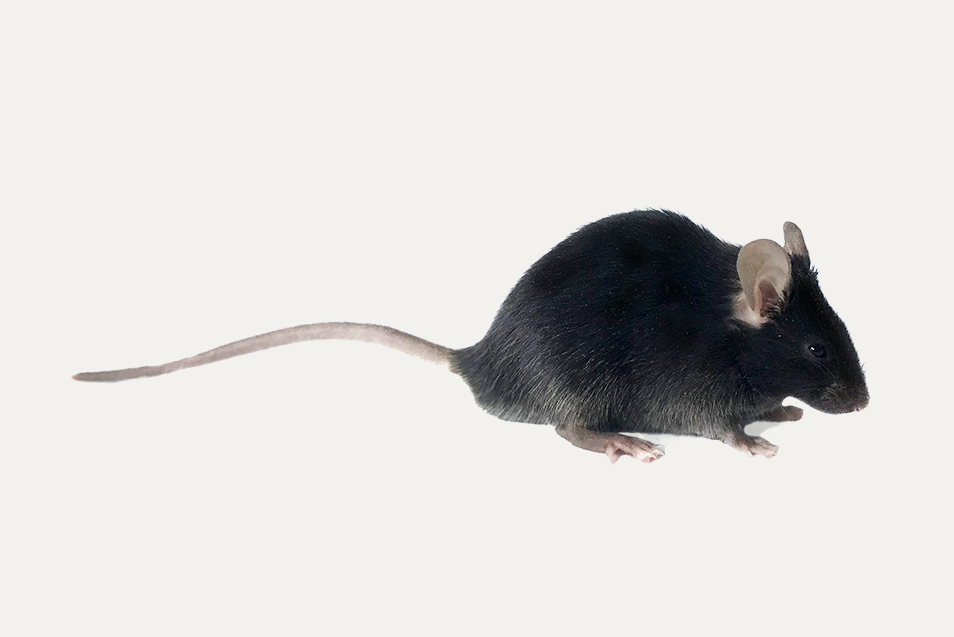C57BL/6JRj Mouse


Model characteristic
Type:
Inbred mouse
Strain name:
C57BL/6JRj
Origin:
CSAL (Orleans) - 1993 (F172)
Colour and related genotype:
Black mouse,a (a/a) non agouti - MHC: Haplotype H2b
Breeding:
Good breeder but quite difficult to rear (sensitive to the environment). Cannibalism with its pups.
Description of our model and application areas
This strain was created by C.C. LITTLE, in 1921, from Miss Abbie LATHROP’s stock.
The Jackson Laboratory’s colony was divided in two sub-strains before 1937, resulting in the C57BL/6 and the C57BL/10 strains. The C57BL/6 strain was brought to The Jackson Laboratory in 1948 (C57BL/6J).
It’s a widely used strain and was the first one to have its genome sequenced. It’s not very sensitive to spontaneous tumours but allows for the expression of a wide variety of mutations, hence its frequent use as genetic background in transgenic models.
C57BL/6JRj show age-related hearing loss and are resistant to audiogenic seizures. It is sensitive to Diet-Induced Type II diabetes and atherosclerosis.
C57BL/6JRj can show alopecia of uncertain etiology: it could have behavioural causes – overgrooming/barbering (JAX® Notes, 1987, Sundberg et al., 2011) – or behaviour similar to human compulsive hair pulling (Garner et al., 2004).
C57BL/6JRj are also characterized by hereditary hydrocephalus (1 to 4% incidence), imperforate vagina after 24 to 28 days), low bone density, higher rates of malocclusion, high rates of microphtalmia and ocular malformations and addiction to morphine and alcohol.
C57BL/6JRj carry a deletion in the Nnt gene (arose in the C57BL/6J prior to 1984).
C57BL/6JRj are active and relatively aggressive but easy to manipulate and have a long life expectancy (2 years).
Main application and research fields
Growth curve
The growth curve represents an average which reflects the weight variation of the strain measured between 21 and 84 days for males and females.


Biochemical and hematological parameters
of 10-week old C57BL/6JRj mice


Reproductive data
Bigamous mating


You may also be interested in these models
Warning: Illegal string offset 'title' in /home/deca3005/janvier-labs.com/html/wp-content/themes/oceanwp-child-theme-master/single-fiche_produit.php on line 921
Voir tous les modèles de recherche




